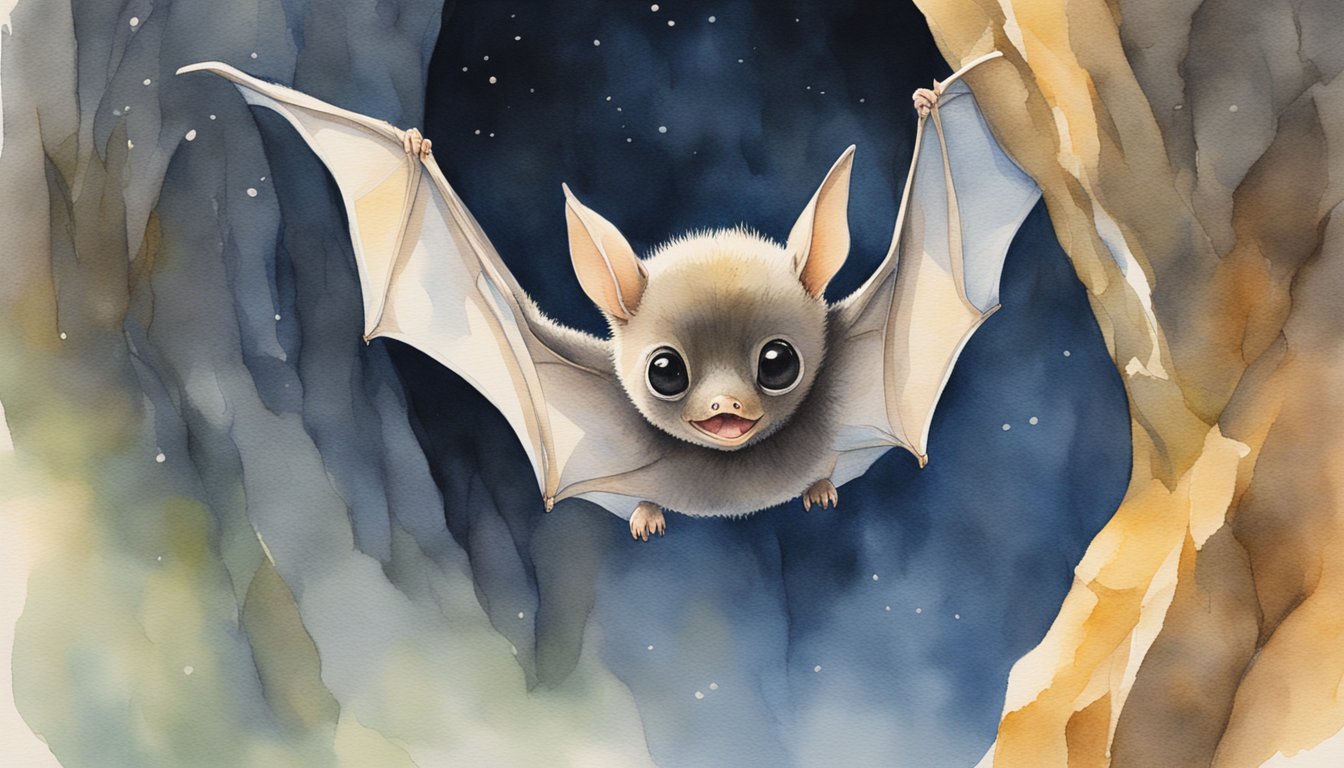Understanding Baby Bats

Baby bats, or bat pups, are born with unique capabilities that are honed from an early age. They are mammals and share many developmental processes similar to other species, but their growth also involves distinct adaptations for their nocturnal lifestyle and flying abilities.
Bat Species and Life Cycle
There are over 1,400 bat species worldwide, and their lifecycles can differ significantly. Bat pups are usually born in a relatively underdeveloped state compared to other mammals but must quickly acquire the necessary skills for survival, from communication to foraging. Their growth is often rapid, as they need to be prepared for flight within a few weeks to months after birth.
Communication and Development
Bats are known for their complex vocal apparatus, which they use to communicate and navigate. From an early age, bat pups begin to practice vocalizations through a process that resembles baby-babbling in human infants. This babbling involves the repetition of key syllables and is foundational for developing their adult vocal repertoire.
Habitats and Behavior
Baby bats are raised in a variety of habitats, including caves and tree hollows. Species like the greater sac-winged bat, found in Central and South America, live in colonies that offer protection and a communal setting for raising young. The space needed by a bat colony varies based on the species and the environmental conditions of their roosting sites.
Diet and Survival Skills
As bats grow, they are introduced to a diet suited to their species, which can include insects, fruit, or nectar. Their survival skills also develop during this time, which includes foraging and echolocation—their primary means of navigating and locating food in the dark.
Health and Human Interaction
Human interaction with baby bats should be minimal; however, there are times when intervention is necessary, such as cases where pups are orphaned or in danger. It’s important to understand that bats can carry diseases like rabies, and any direct contact should be approached with caution and ideally performed by trained wildlife rehabilitators.
Conservation and Coexistence
In addressing the plight of various bat species, conservation efforts focus on mitigating threats, rehabilitating injured bats, and increasing public awareness to foster a harmonious relationship between humans and these essential mammals.
Challenges and Threats
Bat populations worldwide face numerous challenges, such as habitat destruction, disease, and widespread misconceptions. Flying foxes and other species suffer when forests are cleared, and some bats are even driven out of warm caves vital for their survival. Meanwhile, the greater sac-winged bat and many others face threats from human activities and needs for guano, which is often harvested from their habitats.
Bat Rehabilitation and Public Awareness
Efforts to protect bats involve rehabilitation programs for injured or orphaned bats, similar to the care human infants receive. In Victoria, initiatives educate the public on the importance of bats in ecosystems. By listening to and understanding bats’ unique, rhythmic sounds through bioacoustics studies, researchers can communicate the bats’ role to the public, emphasizing conservation.
Role in the Ecosystem
Bats play pivotal roles in their ecosystems as pollinators, seed dispersers, and insect controllers. For example, a single bat can consume thousands of insects in one night, providing natural protection for crops. Bats’ diets range from insects to nectar and fruit, making them essential for maintaining balanced habitats across the United States and beyond. The vast diversity of bat species, each with varying wingspans and dietary needs, underscores their ecological impact.
Discover more about the intriguing lives of baby bats and their journey from bat pups to skilled fliers. Explore the natural history and coexistence of Central Oregon’s bat species. Learn astonishing facts about these nocturnal creatures by understanding their important roles in ecosystems and the threatening challenges they face. Engage with ongoing efforts in bat conservation and the celebration of their existence, overcoming deep-seated fears and fostering a coexistence that benefits both the natural world and human societies.

